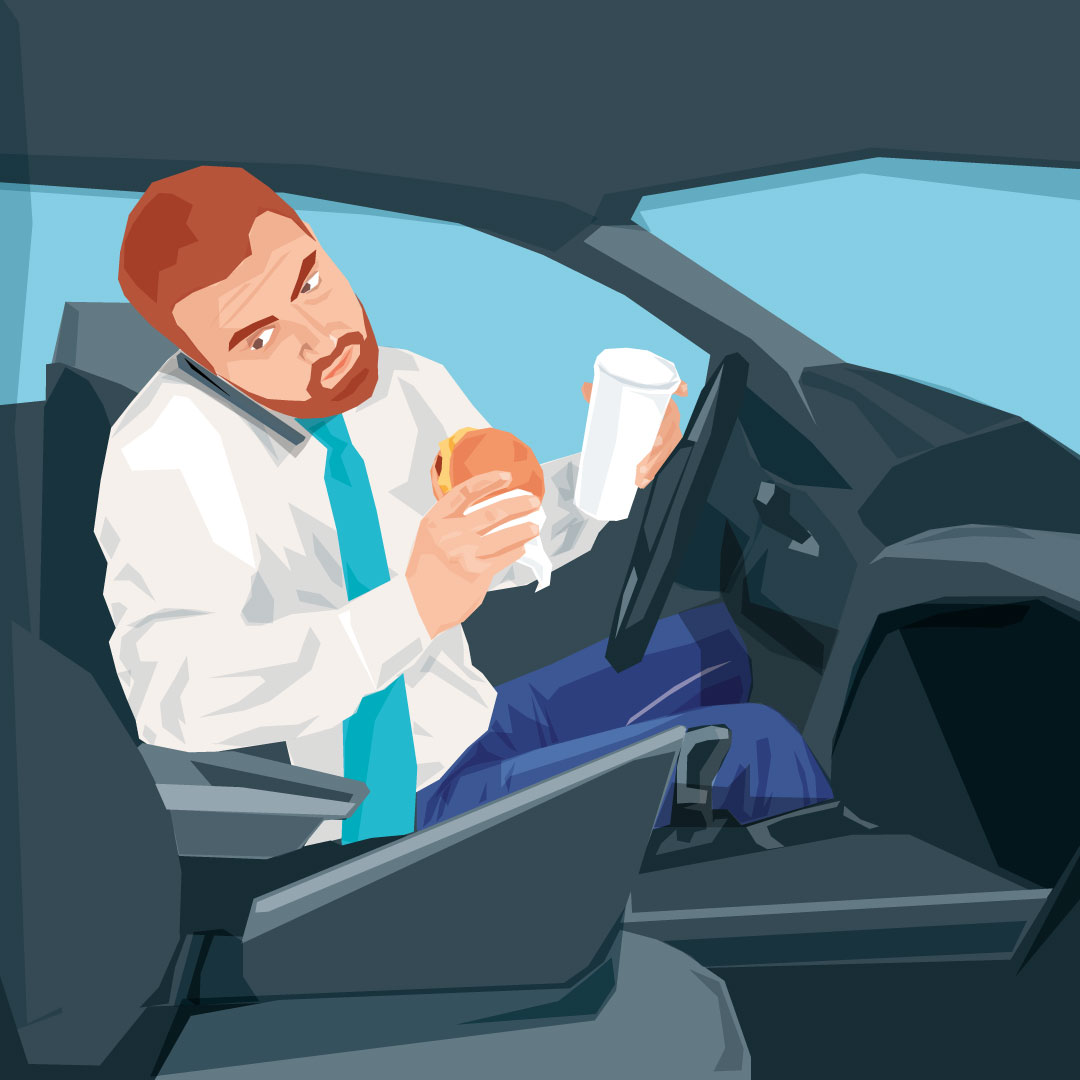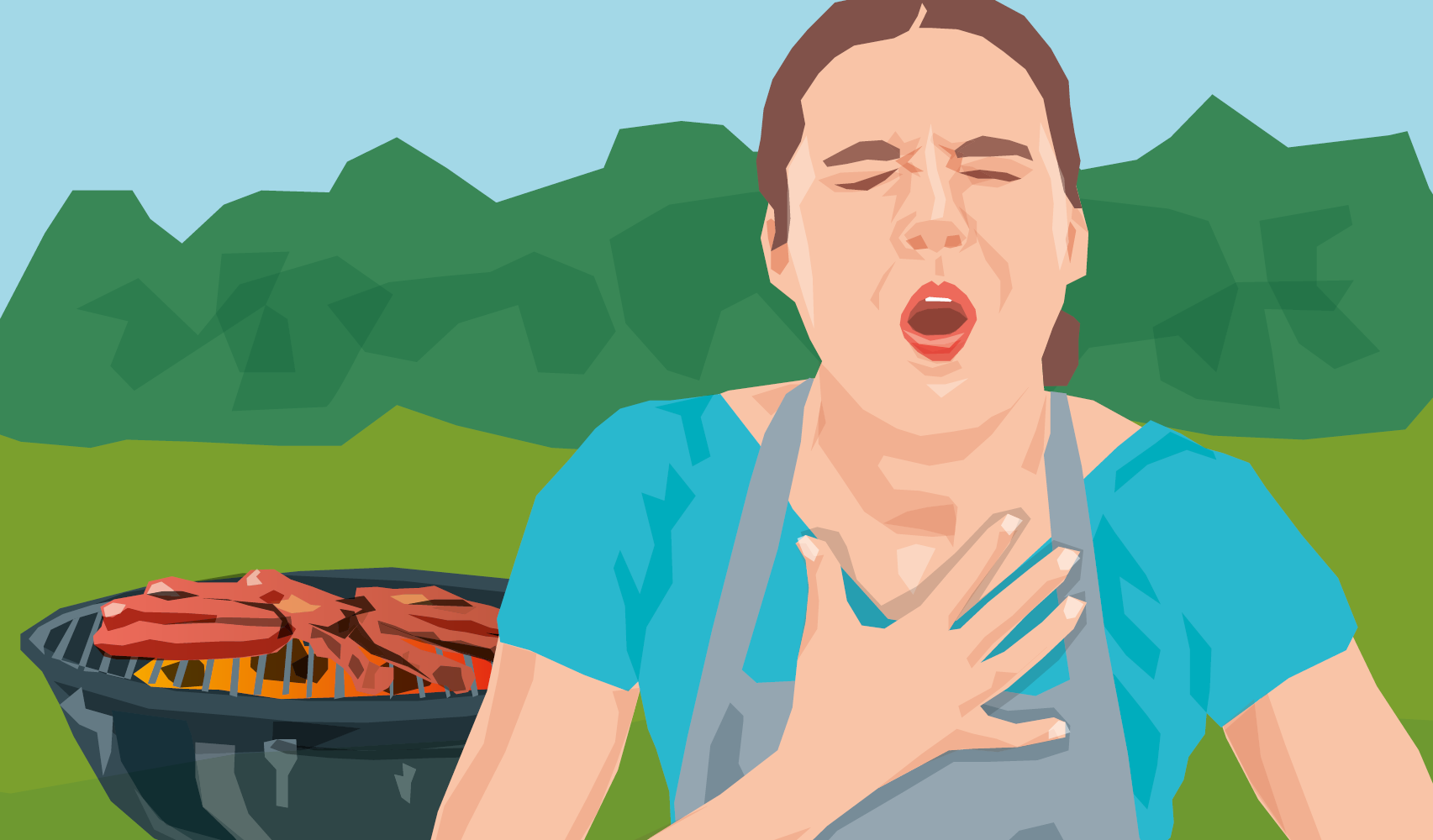SWALLOWING DIFFICULTIES:
EOSINOPHILIC OESOPHAGITIS?
INFORMATION FOR PEOPLE WITH THE CONDITION



Food often got stuck in Frank’s* throat when he was eating
Frank* is a sales representative and spends a lot of time in his car, which is why he often eats his lunch “on the road”. On one such occasion when he was eating a sandwich in his car, his oesophagus suddenly spasmed and he was unable to swallow the bite of sandwich. After a long five minutes, the spasm eased. Frank believed that he had simply eaten too quickly or not chewed his food properly. However, the spasms recurred and happened more frequently. Frank went to see his doctor who told him that he simply needed to take more time when eating.
However, his gut instinct told him that there must be something else behind the spasms. Maybe it was a reflux disease like his father has? In 2015, he visited his father’s doctor, but received a very different diagnosis: Frank has eosinophilic oesophagitis (usually abbreviated as EoE), a rare inflammatory disease of the oesophagus.

“It felt like someone had stabbed me in the chest.” – Frank*, EoE patient
After the diagnosis, Frank was prescribed medication
He started taking the medication immediately and used prescribed proton pump inhibitors as required, which have not been approved for EoE or tested for long-term therapy. As long as he took the medication, he had no complaints. If he stopped taking it, his symptoms reappeared after just a few days and had an enormous impact on his day-to-day life. On one occasion, he was unable to swallow a piece of meat at a dinner with friends. “It felt like someone had stabbed me in the chest,” he says. The pain lasted for two hours and was so severe that it made him vomit. Many people with eosinophilic oesophagitis have experienced stories like this. The first drug specifically developed and officially approved for EoE patients has been available since 2018 for the permanent control of symptoms. The effervescent orodispersible tablet is easy to take and has a local effect in the oesophagus, which means it is well tolerated with few side effects. Frank says that when he heard that this therapy had been approved, he had tears in his eyes. This is a clear indication of the level of suffering that people with this condition endure and of how great the hope is that this new treatment option will provide the opportunity for them to regain significant quality of life.
“I had tears in my eyes when I heard about the new therapy.” – Frank*


